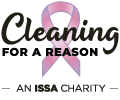Articles
Don’t Let Bugs Bug Your Customers
Categories: Cleaning Best Practices, Cleaning for Health & Safety
By Robert Kravitz | May 9, 2018 << Back to ArticlesThe food service industry, and specifically restaurants, is one of the largest business sectors for jansan distributors. Restaurants purchase and use huge volumes of solvents and chemicals―degreasers, sanitizers, all-purpose cleaners, and oven cleaners―along with all types of paper products.
The food service industry also is a sizable market for cleaning contractors. Many restaurants go back and forth between outsourcing their cleaning to building service contractors or having it performed in-house. The key determination in this decision has typically been cost; it often appears to be less expensive to have the kitchen crew members clean the restaurant at the end of their shift. However, a serious citation from the local health department can cause a restaurant to rethink this approach and reevaluate how they value cleaning.
Case in point: The Las Vegas, NV, Bureau of Health Protection Services (BHPS) is considered one of the most stringent health inspection departments in the country. With millions of visitors from all over the world visiting Las Vegas, the city is dependent on tourism. Ensuring that the city’s hotel and casino food service facilities are clean, healthy, and sanitary is crucial to the local and state economy.
One 24-hour Las Vegas restaurant recently received a surprise inspection from the BHPS. As a result of the inspection, its rating went from a grade of A, the highest, to a C, mainly due to sanitation issues and indications of a pest infestation. During the daylight inspection, a cockroach was seen crawling through the restaurant’s dining room. If cockroaches are out during day, this is a strong indication that there are hundreds if not thousands more of them hiding somewhere else in the facility.
Because of the barely passing grade and existing pest problem, the restaurant can expect the health department to become a regular visitor until conditions improve. To turn things around, the restaurant could simply call in an exterminator to eradicate the bugs. However, according to George Botta of J.S. Pest Control in Las Vegas, “Research has shown that insects can survive pesticide exposure when they have even small amounts of food. This makes proper sanitation essential not only in addressing the current problem but in preventing such a situation from developing again in the future.”
So how can cleaning professionals help this restaurant and others like it?
According to Richard Sanchez, a cleaning contractor from Northern California, the first thing restaurant managers must do is analyze how the facility is currently being cleaned and then see how its cleaning processes could be improved.
“What we often find is that many kitchen workers are so tired at the end of their shift that their main goal when it comes to cleaning is to just get the job done as quickly as possible,” says Sanchez. “For proper cleaning and sanitation, my advice is for managers to hire an outside cleaning contractor familiar with restaurant cleaning on a regular, if not daily, basis.”
Next, Sanchez says managers need to understand exactly why the bugs are there in the first place. Restaurants offer a perfect environment for rodents, cockroaches, and other insects because of the food, grease, and water that invariably find their way onto kitchen floors and into scores of other places. “There are so many nice and comfy places for bugs to hide in a restaurant,” Sanchez adds.
Hiring an exterminator is an option and will likely be necessary due to the scope of the infestation in the aforementioned Las Vegas restaurant. But Sanchez suggests that managers must also dig deeper into sanitation issues and figure out what has rolled out the welcome mat for the offending invaders. In the Las Vegas restaurant example, further investigation uncovered the following:
- The cooking equipment including stoves, ovens, and deep fryers were not properly cleaned.
- Areas surrounding the dishwasher were covered with food debris and grease.
- The floor drains all contained grease and food particles.
- Damp mops and rags were stored in the kitchen (and likely reused when needed throughout the day, causing them to become increasingly soiled).
- Syrup and sticky residue was found on the floors behind the bar.
- Floors were not thoroughly cleaned. In some areas there was a film over the floor, indicating a grease residue.
“While serious, most of these issues can be addressed relatively easily,” says Sanchez. “However, what may be more difficult (to remedy) are the floors. Proper floor care is essential in food service locations, and obviously this facility has to reexamine its entire floor care program.”
Among the options Sanchez recommends:
- Implement new mops. The restaurant already had been cited for storing damp, soiled mops. Using them on the floors can spread more contaminants, resulting in the “film” found on the floor.
- Consider a wall-mounted pressure washing system. These systems mix water and chemicals automatically; however, they also can consume huge amounts of water and may not be a sustainable option in drier climates.
- Use a dispense-and-vac system. These systems, which have been recognized by the National Restaurant Association, dispense cleaning solution directly onto the floor, which is then agitated using a brush if necessary, not a floor mop. The solution is vacuumed up, removing moisture and soils.
- Employ a food service steam cleaner. Some of these machines can release steam of more than 250°F, hot enough to melt down grease and oils and destroy many types of germs and bacteria.
“We work with many restaurant and other food service facilities,” says Sanchez. “At the end of the day, it is effective, hygienic cleaning that is critical to preventing pest infestations and helping food service facilities meet sanitation and inspection requirements.”

About the Author.
A former building service contractor, Robert Kravitz is president of AlturaSolutions Communications, a Chicago, IL-based firm that provides corporate communication services to organizations in the jansan and building maintenance industries. He can be reached at [email protected].





